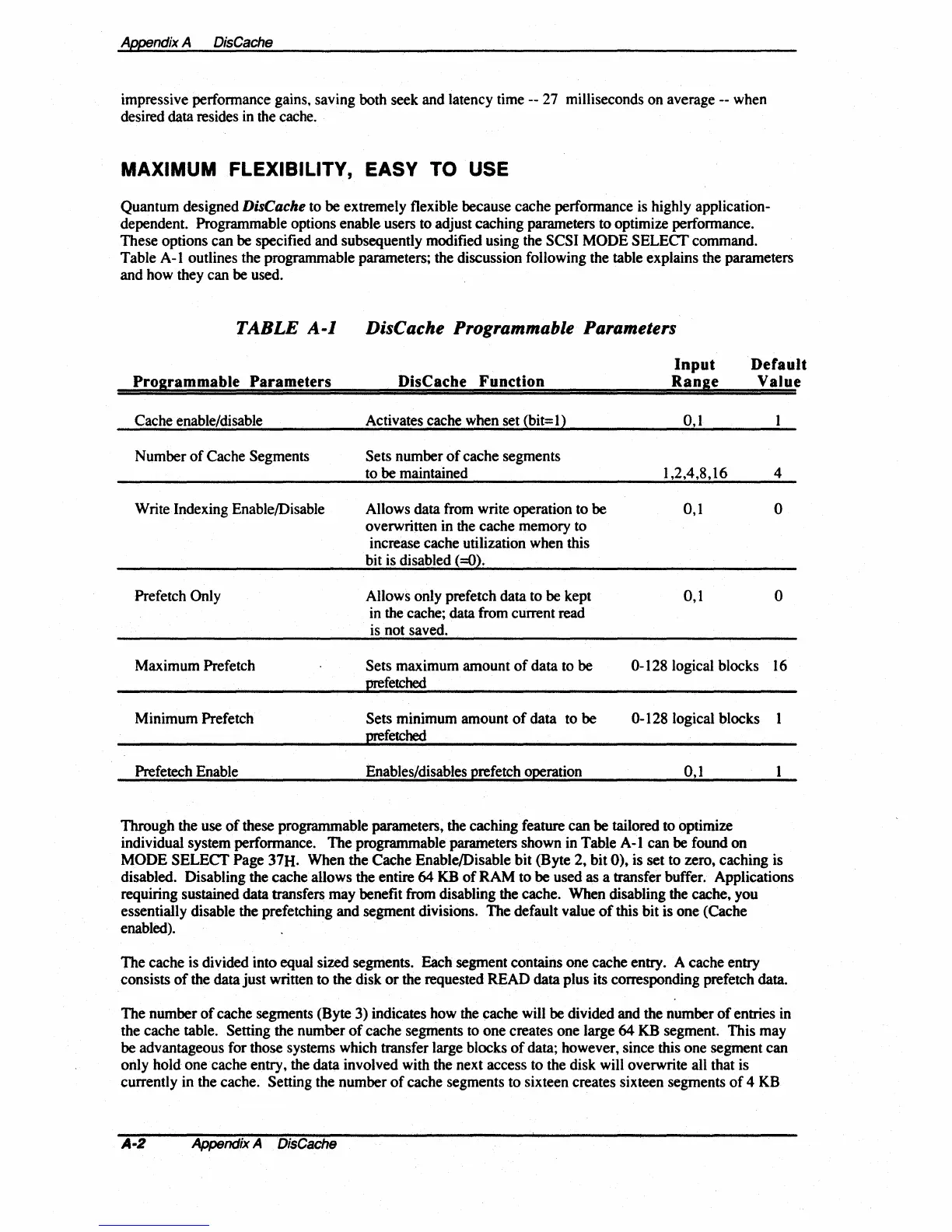Appendix A
DisCache
impressive performance gains. saving both seek and latency time -- 27 milliseconds on average -- when
desired data resides in the cache.
MAXIMUM FLEXIBILITY, EASY TO USE
Quantum designed DisCache to be extremely flexible because cache performance is highly application-
dependent. Programmable options enable users to adjust caching parameters to optimize performance.
These options can be specified and subsequently modified using the
SCSI MODE
SELECf
command.
Table A-I outlines the programmable parameters; the discussion following the table explains the parameters
and how they can be used.
TABLE
A-I
Pro
ram
mabie Parameters
Cache enable/disable
Number
of
Cache Segments
Write Indexing Enable/Disable
Prefetch Only
Maximum Prefetch
Minimum Prefetch
Prefetech Enable
DisCache Programmable Parameters
DisCache Function
Activates cache when set (bit= I)
Sets number
of
cache segments
to be maintained
Allows data from write operation to be
overwritten in the cache memory to
increase cache utilization when this
bit is disabled
(=0).
Allows only prefetch data to be kept
in the cache; data from current read
is not saved.
Sets maximum amount
of
data to be
prefetched
Sets minimum amount
of
data to be
prefetched
Enables/disables prefetch operation
Input
Ran
e
0,1
1,2,4,8,16
0,1
0,1
Default
Value
4
o
o
0-128 logical blocks
16
0-128 logical blocks I
0,1
Through the use
of
these programmable parameters, the caching feature can be tailored to optimize
individual system performance. The programmable parameters shown in Table A-I can be found
on
MODE SELECT Page 31H. When the Cache Enable/Disable bit (Byte 2, bit
0),
is set to zero, caching is
disabled. Disabling the cache allows the entire
64
KB
of
RAM to be used as a transfer buffer. Applications
requiring sustained data transfers may benefit from disabling the cache. When disabling the cache, you
essentially disable the prefetching and segment divisions. The default value
of
this bit is one (Cache
enabled).
The cache is divided into equal sized segments. Each segment contains one cache entry. A cache entry
consists
of
the data just written to the disk
or
the requested READ data plus its corresponding prefetch data.
The number
of
cache segments (Byte 3) indicates how the cache will be divided and the number
of
entries in
the cache table. Setting the number
of
cache segments to one creates one large
64
KB segment. This may
be advantageous for those systems which transfer large blocks
of
data; however, since this one segment can
only hold one cache entry, the data involved with the next access to the disk will overwrite all that is
currently in the cache. Setting the number
of
cache segments to sixteen creates sixteen segments
of
4
KB
A-2
Appendix A
DisCache

